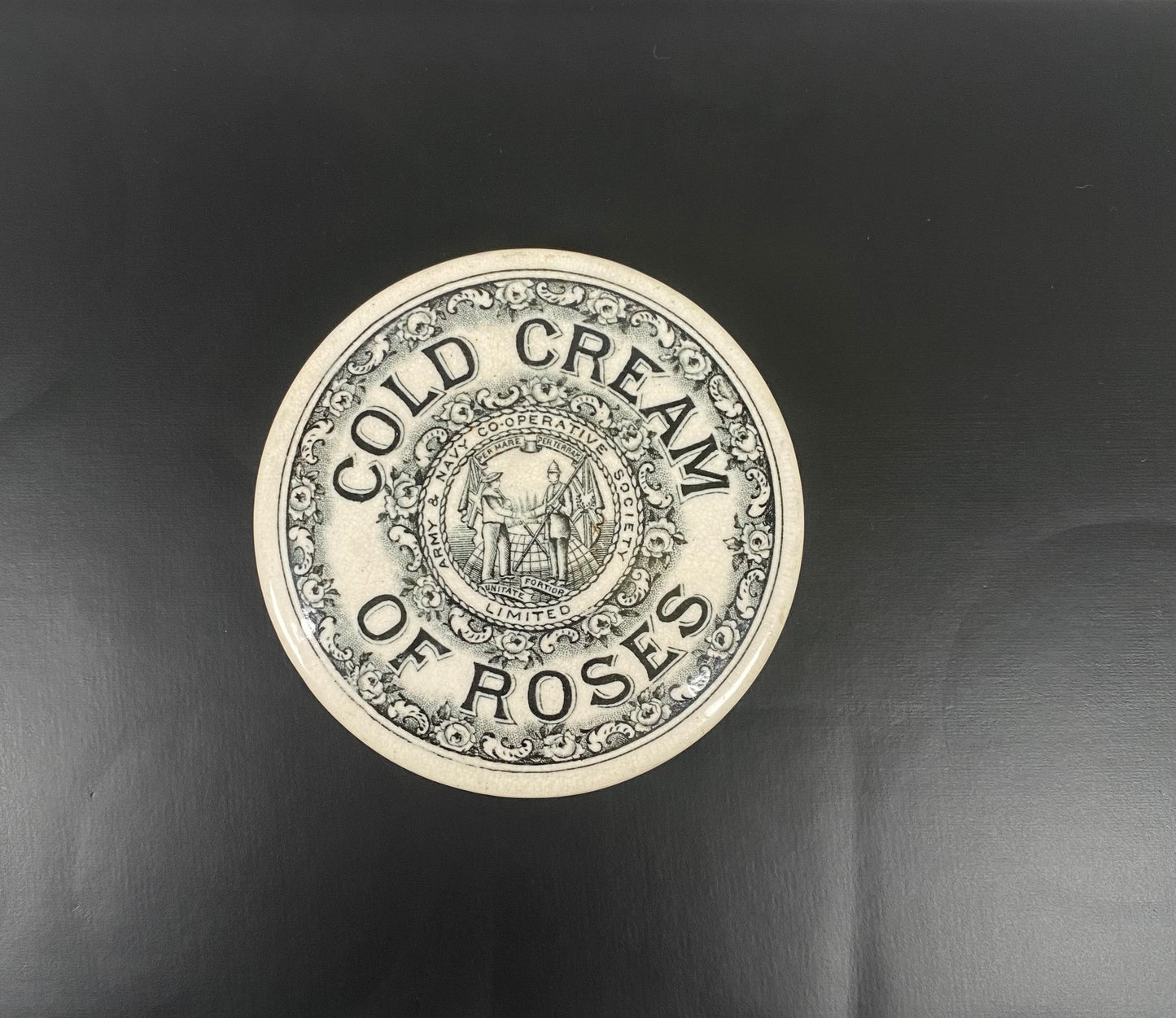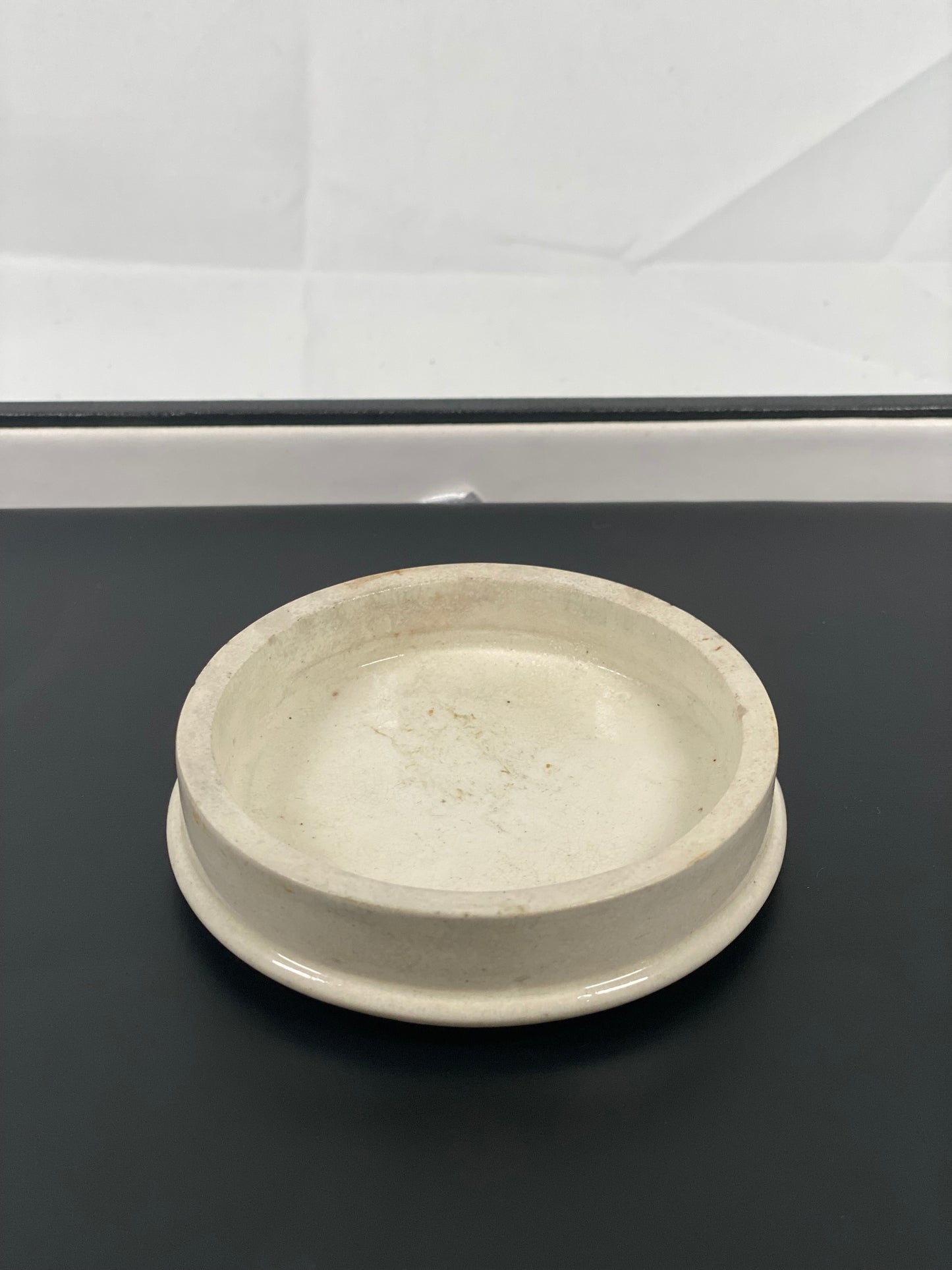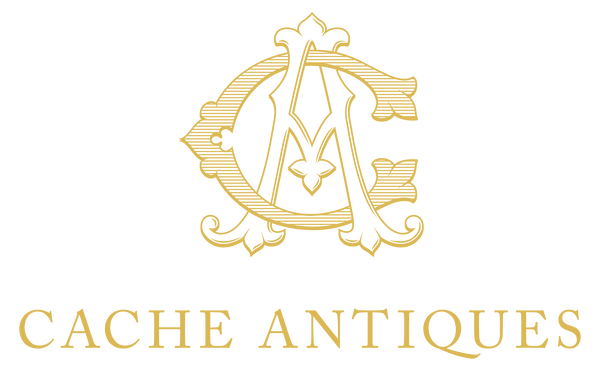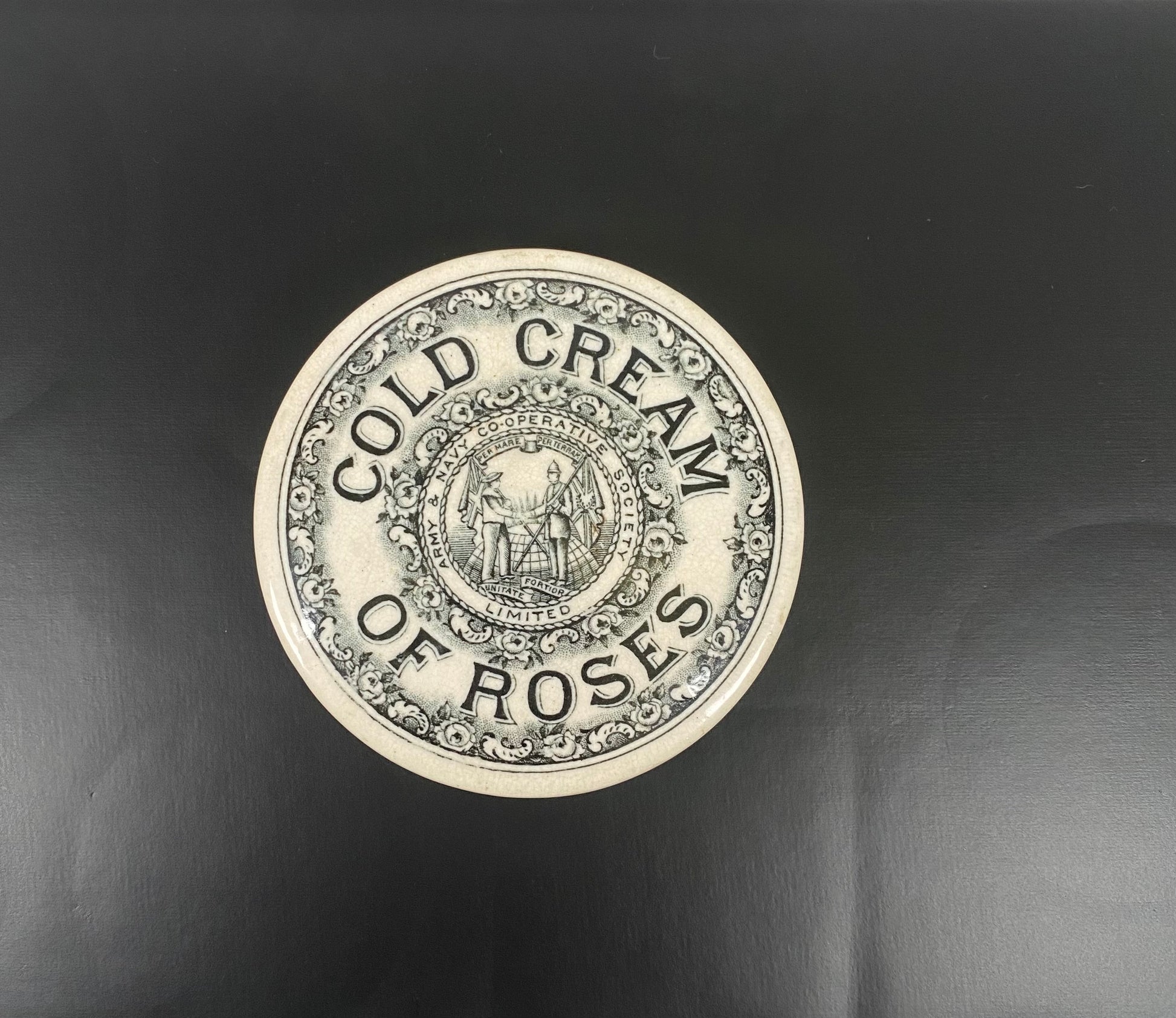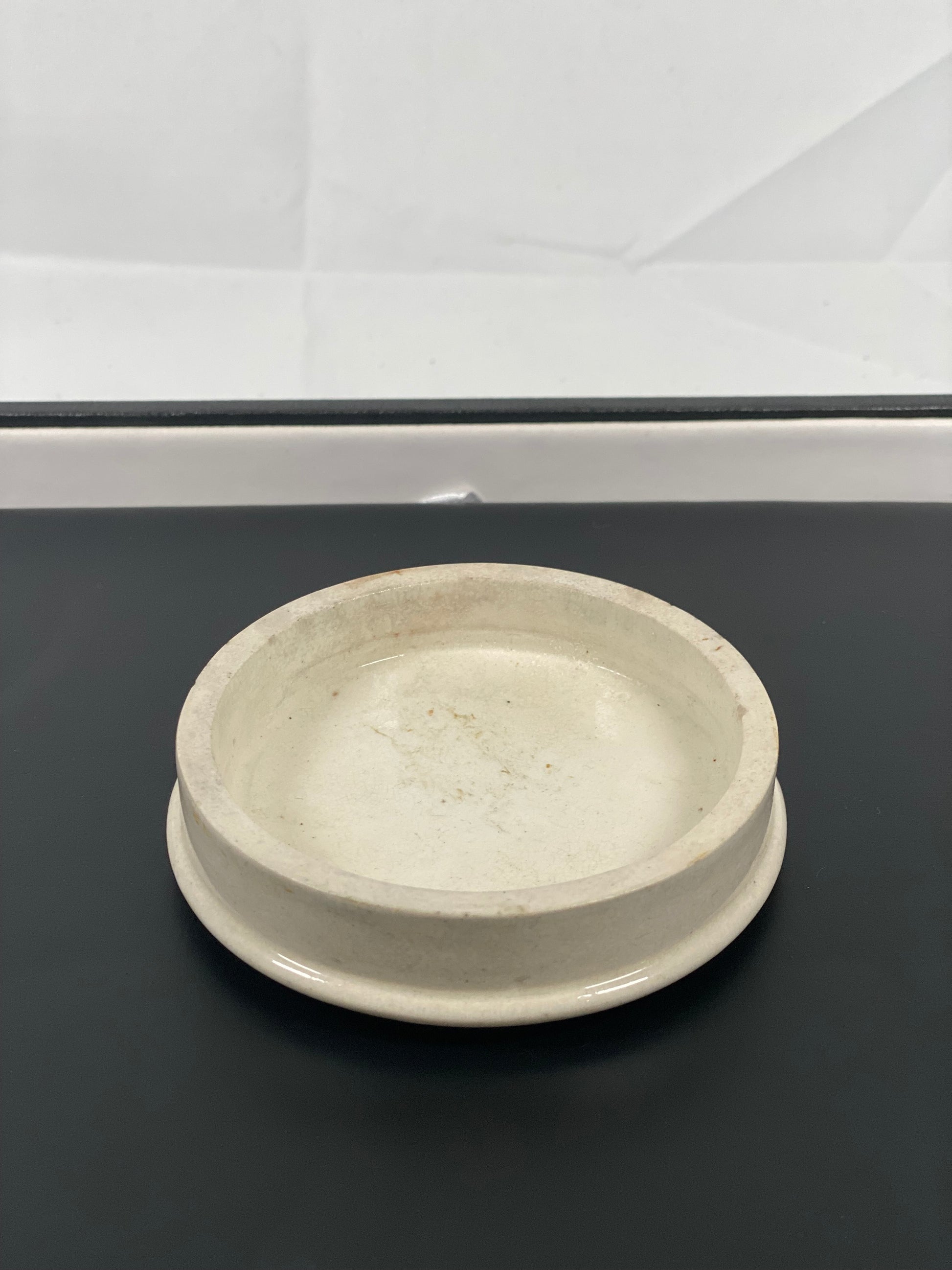cacheantiquessydney
19th Century Victorian Army & Navy Cooperative Society Ltd. Transferware Cold Cream of Roses Pot Lid
19th Century Victorian Army & Navy Cooperative Society Ltd. Transferware Cold Cream of Roses Pot Lid
Couldn't load pickup availability
Cold cream- a timeless beauty recipe and unlike most antique cosmetics, actually safe to use. Cold cream was first invented in 129 – c. AD 216 by the legendary greek physician Galen.
Cold cream was popular among all classes of women in Victorian times; it was one of the few products that even ladies of high rank would disclose using; they would not disclose their beauty rituals, especially not cosmetics which were considered indiscreet and even vulgar. Cold cream however was believed to cleanse the skin and protect the pale translucent complexion that ladies so desired, which was a mark of higher status. Floral preparations such as violets and roses were highly favoured.
Due to the nature of the formulation, which often used plant oils and beeswax, small batches were made on the spot by chemists, who would devise and jealously guard their recipes. Cold cream was sold in shallow ironstone pots in Victorian England until just before World War One. The lettering and graphics applied to these paste pots now provide stunning examples of Victorian utilitarianism and insight into 19th century daily life, as well as people’s needs and aspirations at the time.
Many such pots were excavated from Victorian rubbish dumps, many of which are now exhausted. This one would be produced circa 1870-80. The Army and Navy Co-Operative Society Ltd was formed in 1871 by a group of British army and navy officers, to supply domestic articles to its members at the lowest rates. It would become a members only department store, and is an excellent example of Victorian advertising and military co-operative wares.
Price marked at AUD$380
Measurements: 8.5 cm diameter, 1.7 cm high.
Good antique condition. These pots are often chipped from use and/or found buried in mud. This is one of the better examples we have found, with some wear to the lid as pictured. One or two tiny fleabite chips to the lid base; not visible when displayed. One manufacturing flaw to the pot lid top. Transfer in good condition.
Shipping & Returns
Shipping & Returns
